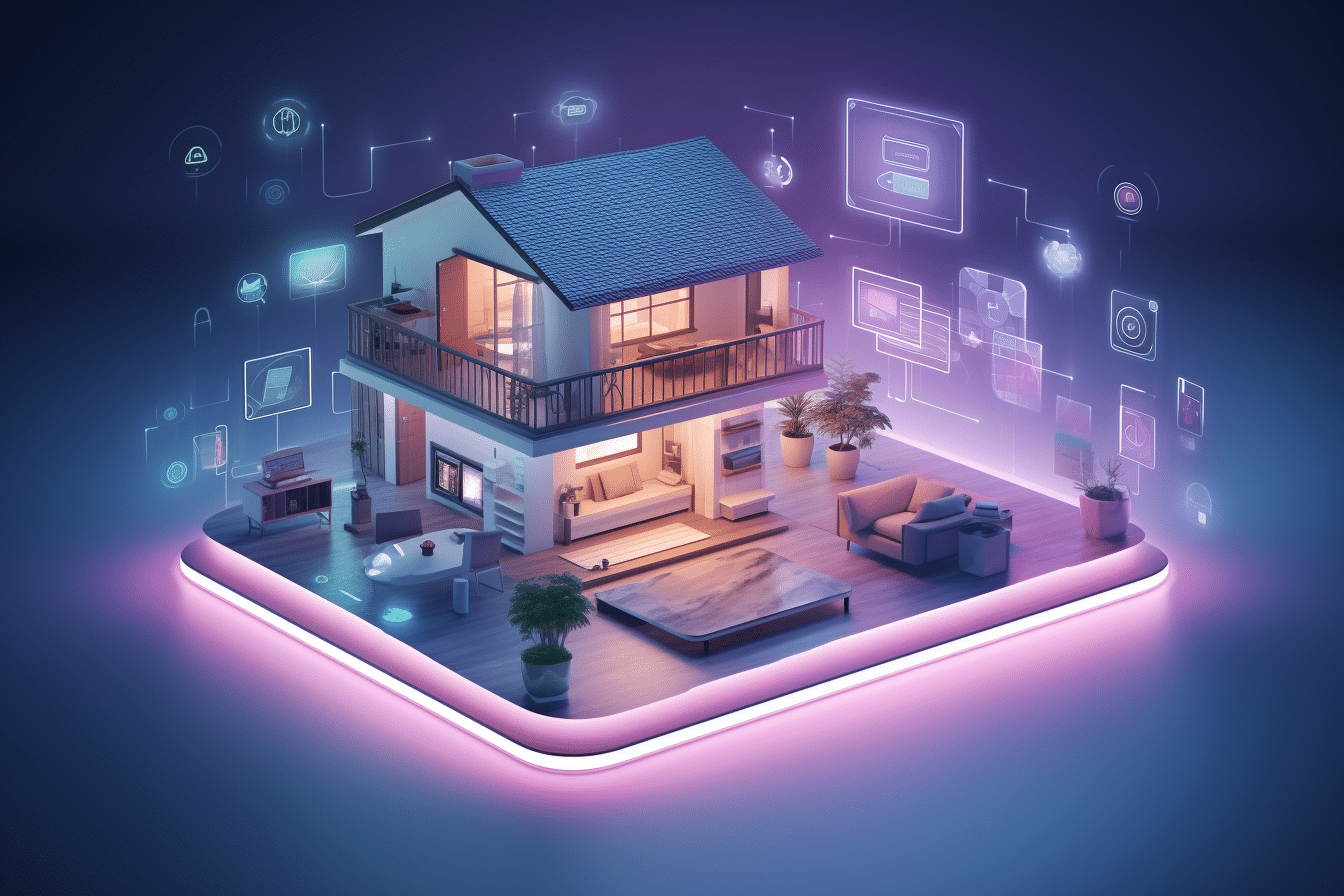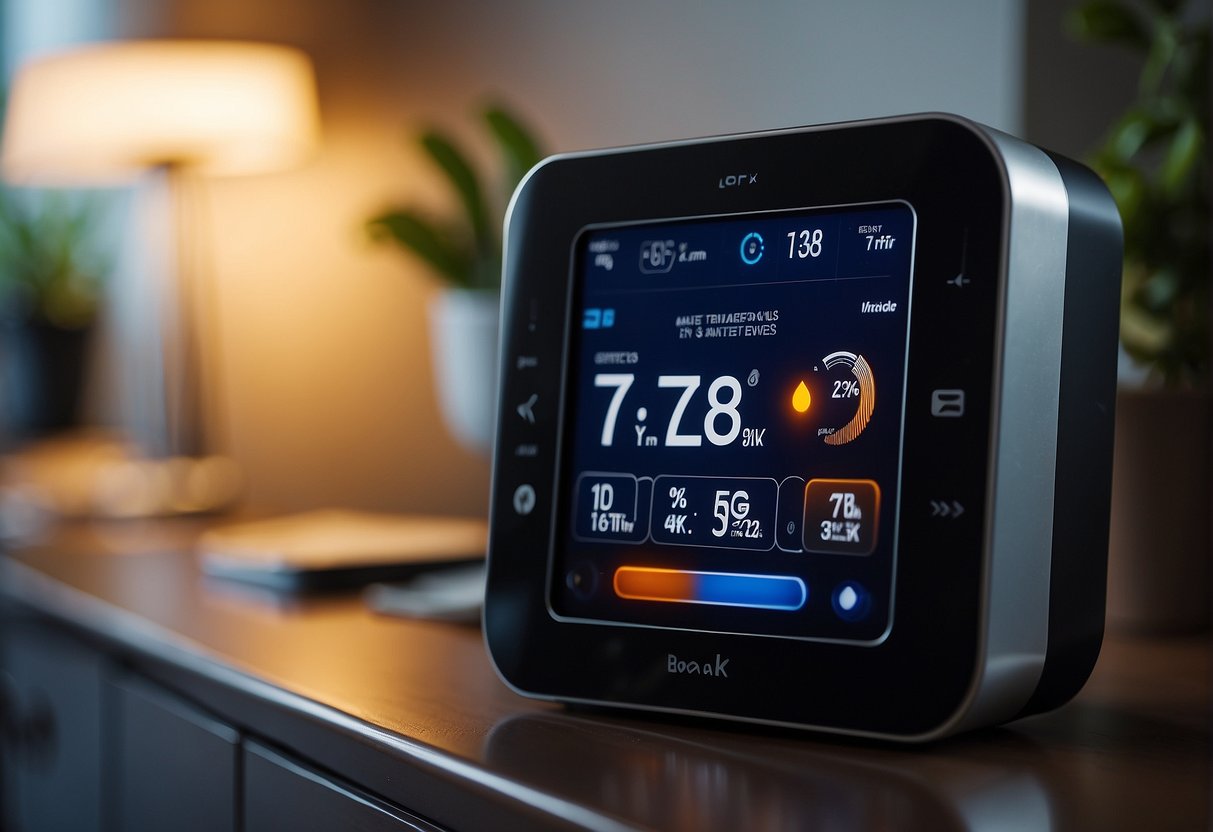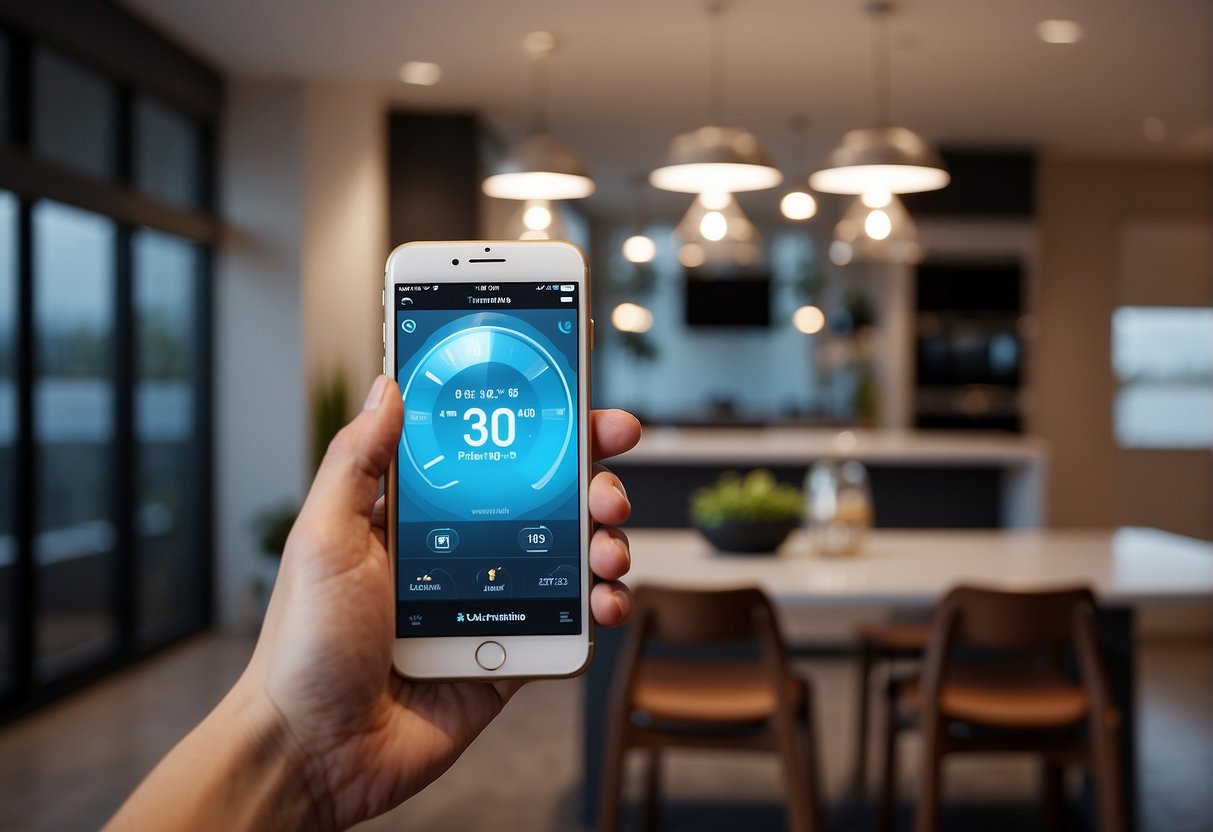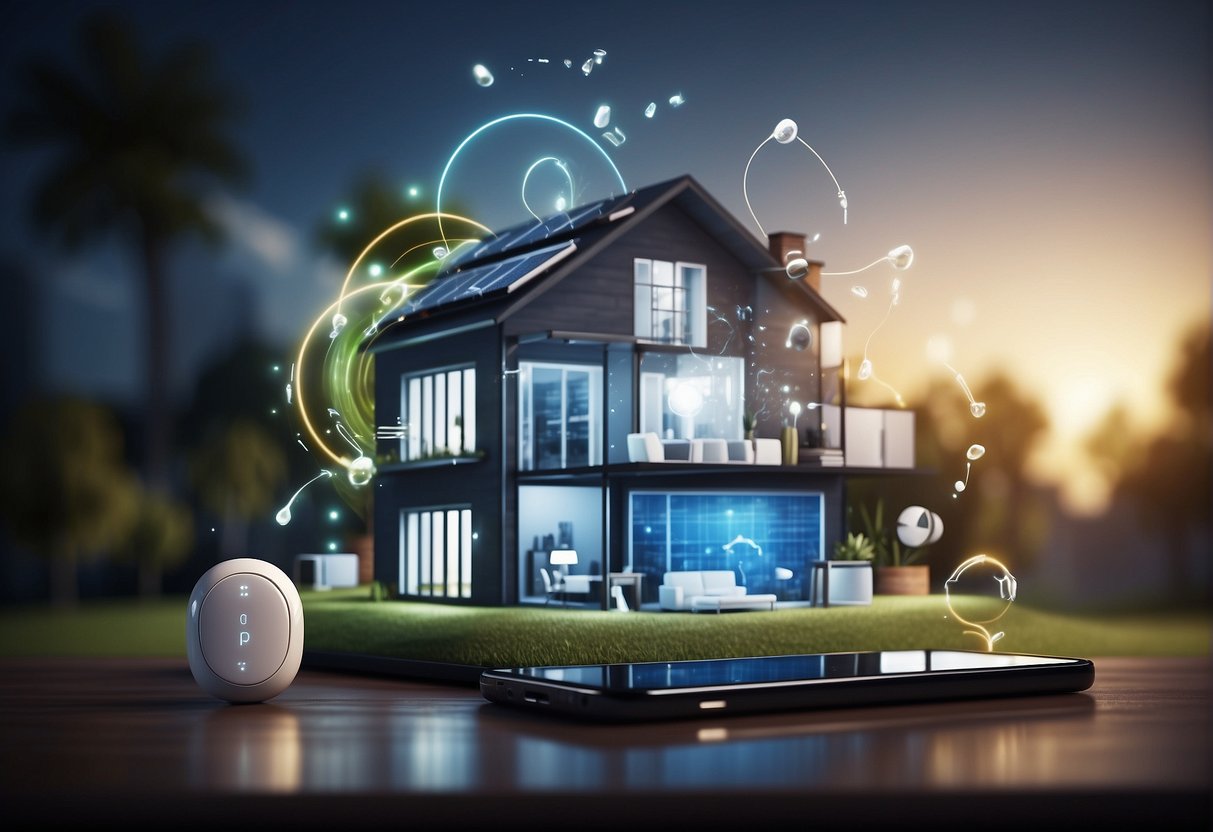
Energy Saving Smart Home Devices: Top Picks for a Greener Life
In today’s world, energy efficiency and smart home technology go hand in hand. As concerns about climate change and energy costs rise, homeowners are increasingly turning to smart devices to lessen their environmental impact and save money on their utility bills. Energy saving smart home devices offer a wide range of benefits and are designed to make life easier, more comfortable, and more convenient.

Understanding the ins and outs of smart home technology can be overwhelming, but it’s essential for those looking to optimize their home’s energy usage. From smart lighting solutions and climate control to water usage management and smart appliances, these devices work together to create an integrated, energy-efficient living space.
As we look forward to the future of smart homes, it’s clear that energy saving devices will play an even more significant role in reducing energy consumption and lowering costs. With the right tools and systems in place, homeowners can reap the rewards of a greener, more efficient home without sacrificing comfort or functionality.
Key Takeaways from Energy Saving Smart Home Devices
- Energy saving smart home devices contribute to a greener, more efficient living space.
- Smart home technology covers a variety of applications, such as lighting, climate control, and water management.
- As smart home technology advances, energy saving devices will play a pivotal role in reducing energy consumption and costs.
Understanding Smart Home Technology
What Are Smart Home Devices?
Smart home devices are electronic gadgets that connect to your home network and allow you to control various household tasks remotely. These devices can be as simple as smart bulbs or as complex as advanced security systems. The devices usually communicate with each other and a central hub, enabling homeowners to manage them through smartphones, tablets, or voice commands.
The Evolution of Smart Home Tech
The early days: Smart home technology began to gain attention in the 1970s with the emergence of home automation systems like X10. This technology allowed users to control their lights and appliances via wired connections. However, these systems had limitations and were not widely adopted.
The Internet Age: As the internet became more prevalent, smart home technology evolved significantly. Companies began to develop wireless home automation systems that used Wi-Fi, Zigbee or Z-Wave technologies. More and more manufacturers started to offer connected devices, like smart thermostats, smart locks, and smart lighting.
The rise of voice assistants: The introduction of voice assistants, like Amazon Alexa and Google Assistant, added a new level of convenience to smart home technology. Homeowners could now control their devices just by talking to them, making smart home tech more accessible and user-friendly than ever before.
Benefits of a Connected Home
- Energy efficiency: Smart home devices like thermostats, lighting systems, and smart plugs allow you to manage your energy consumption effectively, helping you reduce your monthly energy bills.
- Added convenience: Connected devices give you the power to control your home appliances remotely, enabling you to perform tasks like starting your coffee machine from your bed or unlocking your door for a guest even when you’re not at home.
- Enhanced security: Home security systems, like smart cameras and door locks, provide an extra layer and peace of mind. You can monitor your home security, and even get real-time alerts on your phone whenever a potential threat is detected.
- Better comfort: With smart home technology, homeowners can customize their living spaces to match their preferences and lifestyles, such as adjusting lighting schemes to create the perfect atmosphere for an evening with friends or setting up routines that automate everyday tasks.
Energy Saving Devices Overview
When it comes to optimizing our homes, energy saving smart home devices play a crucial role in reducing energy consumption while maintaining comfort. These devices not only help in cutting down the costs on electricity bills but also contribute to a sustainable environment.
Categories of Energy-Efficient Devices
There are several categories of energy-efficient devices that can be integrated into a smart home setup. Here are a few notable examples:
- Smart thermostats: These devices learn about the homeowner’s preferences and adjust the temperature accordingly, ensuring optimal energy usage.
- Smart lighting: Equipped with motion sensors, smart lights turn off when nobody is in the room, resulting in energy conservation.
- Smart plugs: With the ability to monitor electricity usage, these plugs can help homeowners identify energy saving opportunities and schedule appliances to run during off-peak hours.
How Smart Devices Save Energy
Smart devices save energy by learning users’ preferences and habits, adjusting their settings to use energy more efficiently. For example, a smart thermostat can learn when you typically leave for work and lower the temperature settings during that time. Additionally, these devices can provide energy saving tips and suggestions through their connected apps.
Energy saving smart home products combined with Smart Home Tips for Saving Energy can help homeowners make informed decisions on optimizing energy consumption and device usage. Ultimately, the collaboration of these devices and best practices leads to a more energy-efficient and cost-effective smart home.
Smart Lighting Solutions

LED Bulbs and Smart Lighting
Smart lighting solutions are a big part of energy saving smart homes. One of the most popular options is using LED bulbs, known for their energy efficiency and long life. A popular choice for smart LED bulbs is Philips Hue. These bulbs not only save energy but also offer customizable color settings for creating the perfect ambience.
Smart Light Bulb and Fixtures
Nowadays, there are numerous smart light bulbs and fixtures available on the market. These devices offer easy integration with smart home systems, allowing remote control and scheduling of your lights. An example of popular brands includes:
- Philips Hue
- LIFX
- Osram Lightify
With smart light bulbs, you have the option to change color, brightness, and even set schedules directly from your smartphone or through voice command with smart home assistants like Amazon Alexa, Google Home, or Apple HomeKit.
Motion Sensors and Light Automation
Another great energy saving solution is integrating motion sensors into your smart lighting system. Motion sensors detect movement within a certain range and trigger the lights to turn on or off accordingly. Here are a few benefits of using motion sensor technology:
- Energy savings: Only having lights on when there’s movement in the area can significantly reduce energy consumption.
- Security: Motion-triggered lighting can deter intruders and increase the safety of your property.
- Convenience: You won’t have to worry about fumbling for light switches in the dark or forgetting to turn them off when you leave a room.
Implementing these smart lighting solutions in your home will not only enhance the functionality and convenience of your living space but also contribute to significant energy savings. So, it’s time to make the smart choice and go for these innovative solutions!
Smart Thermostats and Climate Control

Temperature Regulation with Smart Thermostats
Smart thermostats help regulate temperatures in homes, ensuring a comfortable living environment while also saving energy. They learn your habits and adjust automatically, turning heating or cooling systems on and off as needed. For instance, the thermostat might turn on your HVAC system before you return home from work, so your living space is already comfortable when you arrive.
Integration with other smart devices, like smartphone apps, also allows homeowners to control their thermostats remotely. This combination of convenience and energy efficiency leads to significant savings on utility bills.
Energy Star-Certified Thermostats
Look for a smart thermostat with an Energy Star certification, which guarantees that the device meets strict energy efficiency guidelines set by the US Environmental Protection Agency. Devices with this certification help reduce greenhouse gas emissions and can save more energy compared to a regular, non-certified thermostat.
Moreover, many utility companies offer rebates for customers who purchase and install Energy Star-certified thermostats. It’s a win-win situation for consumers and the environment.
Nest and Ecobee: Leaders in Smart Climate Control
Two standout brands in the smart thermostat market are Nest and Ecobee. While they each offer their unique features, both are known for their intelligent climate control and user-friendly interfaces.
| Brand | Unique Feature |
|---|---|
| Nest | Learning mode adjusts to your habits |
| Ecobee | Room sensors maintain even temperatures |
The Nest Learning Thermostat remembers your preferences over time and adjusts accordingly, reducing your need to fiddle with the device. Ecobee, on the other hand, offers remote sensors that can be placed around your home to ensure even temperature distribution across multiple rooms.
By incorporating a smart thermostat into your home, you can enjoy a more comfortable living space while reducing energy waste and saving money on your utility bills.
Smart Appliances and Energy Reduction

Energy-Efficient Large Appliances
Investing in energy-efficient large appliances can significantly help reduce energy consumption and cut down on those pesky energy bills. Refrigerators, for example, are known to use a considerable amount of energy. Opting for a smart, energy-efficient refrigerator allows you to save energy, while also monitoring and controlling its temperature remotely via a smartphone app.
Washing machines and dryers are other notable energy consumers in a household. Choosing smart, energy-efficient models comes with several benefits, such as their ability to optimize water and energy usage based on the laundry load size.
Dishwashers are critical in the kitchen, but can also add to energy consumption. Energy-efficient dishwashers, in addition to being eco-friendly, can help save water and even detect leaks.
Smart Plugs and Outlets
Smart plugs and smart power strips are convenient tools for conserving energy while making any appliance in your home a bit more intelligent. These plugs connect to a Wi-Fi network and allow you to set schedules, monitor energy usage, and even remotely switch off devices via smartphone apps. By monitoring your devices’ energy usage, you can:
- Identify energy-hogging appliances
- Develop better energy consumption strategies
- Cut down energy bills in the long run
Home Energy Use Monitoring
In today’s age of smart technology, it’s easier than ever to keep track of the overall energy usage in your home. Home energy use monitoring systems and devices provide real-time data and insights into your energy consumption, empowering you to:
- Identify inefficient devices
- Develop energy saving habits
- Reduce your carbon footprint
Some monitoring systems can even notify you if they detect unusual energy consumption patterns, which could indicate potential issues with your appliances. By utilizing these smart devices, you can take full control of your energy usage and contribute to the conservation of our planet’s precious resources while saving on energy bills.
Smart Home Water Usage Management

Smart Sprinklers and Garden Management
Smart home devices can help manage water usage effectively, especially in your garden. One great example of such a device is the Rachio 3 Smart Sprinkler Controller. Using local weather data, it adjusts watering schedules to avoid both over-watering and under-watering your plants. Furthermore, the Rachio 3 also has the following features:
- Voice control via Alexa, Google Assistant, or Apple HomeKit
- Mobile app for easy scheduling and monitoring
- Integration with smart home systems
By implementing a smart sprinkler such as the Rachio 3, homeowners can reduce water waste, save money on water bills, and maintain a healthy, beautiful garden.
Water Leakage Detectors
Flo by Moen is another smart home product that helps manage water usage by monitoring for leaks. It can detect small amounts of water leakage that would otherwise go unnoticed, potentially saving a lot of water (and money) over time. In addition, Flo by Moen includes:
- Real-time notifications for suspected leaks
- Compatibility with smart home assistants
- A mobile app for remote water shut-off in case of emergencies
Investing in water leakage detectors like Flo by Moen can provide homeowners with peace of mind and contribute to overall water conservation efforts.
Reducing Water Waste
Incorporating smart home devices in water management can help significantly reduce water waste. By using devices such as the Rachio 3 Smart Sprinkler Controller and Flo by Moen, you can achieve the following:
- Customized watering schedules for optimal plant care
- Leak detection for early intervention and repair
- Improved water efficiency through real-time monitoring
Remember, managing water usage is not only beneficial for individual homeowners, but it is also crucial for conserving resources and protecting the environment. Embracing smart home devices for water usage management is a step forward towards a more sustainable and responsible lifestyle.
Integration and Smart Home Systems
Smart Home Hubs and Ecosystems
When it comes to energy saving smart home devices, having a smart home hub is essential. It acts as the brain of the system, connecting and controlling all smart devices in the house. Popular hubs include the Amazon Echo and Google Home, which are part of the Amazon Alexa and Google Assistant ecosystems, respectively. These ecosystems provide seamless integration, making it easier for users to manage all connected devices from a single app or interface.
Voice Assistants and Control
Voice assistants have revolutionized the way people interact with their smart home systems. Amazon Alexa and Google Assistant lead the pack when it comes to popularity and functionality. They allow users to control their smart home devices just by talking, making the experience more intuitive and user-friendly. For example, one can easily adjust the thermostat, turn off lights, or check if the doors are locked – all with a quick voice command.
Compatibility and Interconnectivity
It’s important to pay attention to device compatibility when building a smart home system. Some devices work only with specific ecosystems, which can limit their functionality. As a general rule of thumb, check for compatibility labels like “Works with Alexa” or “Works with Google Assistant” to ensure smooth integration.
Here are a few tips to enhance your smart home system’s interconnectivity:
- Opt for devices that support multiple ecosystems. For example, some smart plugs can be controlled using both Amazon Alexa and Google Assistant.
- Make use of IFTTT (If This Then That), which lets you create rules and automation for connected devices that don’t natively support your preferred ecosystem.
- For a more customized solution, consider a Z-Wave or Zigbee compatible smart home hub, as these protocols offer wider compatibility across multiple brands and devices.
In summary, integrating smart home devices can lead to considerable energy savings and a more convenient lifestyle. By carefully selecting compatible devices and making use of your preferred home ecosystems, you can create an efficient and user-friendly energy saving smart home system.
Energy and Cost Savings
Calculating Energy Savings
Integrating smart home devices into your everyday life can lead to significant reductions in energy usage. From smart thermostats to energy-efficient light bulbs, these devices work together to optimize your energy consumption. For example, installing a programmable thermostat can result in 8%-10% savings on your heating and cooling costs. Read more about energy saving smart products in this helpful article.
Long-Term Financial Benefits
Investing in energy saving smart home devices may seem costly upfront, but the long-term financial benefits are worth it. These smart devices can help you save money on utility bills throughout the year by reducing unnecessary energy consumption. Moreover, some energy-efficient devices can also increase the resale value of your property.
Here are a few examples of smart home devices that can lead to savings:
- Smart thermostats: These devices learn your preferences and adjust temperatures accordingly, resulting in energy savings.
- LED light bulbs: LEDs consume significantly less energy than traditional bulbs and also last longer, saving both energy and money.
- Motion sensor switches: Motion-activated switches save energy by ensuring that lights are turned off when a room is not in use.
Impact on Utility Bills
Utility bills can eat up a good portion of your monthly budget, especially during extreme weather conditions. Implementing smart home devices, such as the ones mentioned in this informative article, can provide noticeable savings. Motion-sensor lighting, for instance, can reduce energy waste and lower your energy bills, while a smart water heater can optimize hot water usage, resulting in lower utility costs.
By incorporating energy saving smart home devices into your lifestyle, you’re taking a step towards reducing energy usage, saving money on utility bills, and leading a more sustainable life.
The Future of Smart Homes
Emerging Smart Home Gadgets
In the realm of smart homes, exciting gadgets are constantly being developed. These innovations make daily routines more efficient while also reducing energy usage. Here are a few devices that are making an impact:
Energy management systems: These systems optimize power utilization by learning occupants’ habits and adjusting energy use accordingly.
Smart thermostats: These thermostats use AI to learn and understand your preferences, ensuring a comfortable home environment while minimizing energy waste.
Integrated solar panels: Solar panels are becoming increasingly popular. Integrated panels allow homeowners to not only generate their own energy but also sell excess power to the grid.
Renewable Energy Integration
One of the most impressive aspects of smart home technology is its potential to fuse with renewable energy sources. Solar panels are a prime example, as they can be installed on rooftops or in yards to help homeowners achieve energy independence. With advancements in battery storage, homes can now store excess solar energy, providing a reliable energy backup and reducing dependence on the grid.
Smart home systems can also assess which devices consume the most energy and then adjust their usage accordingly. By minimizing energy waste and increasing energy efficiency, households can shrink their carbon footprint and contribute to a healthier planet.
Smart Homes and Sustainability
In the pursuit of energy efficiency, smart homes can play a key role in promoting sustainability. As these technologies continue to evolve, they have the potential to significantly reduce individual household emissions, leading to a greener future. From better energy management systems to solar panel integration, the smart home revolution is well on its way to creating a more sustainable world.
Luxury Specialist at McGraw Realtors
With a diverse background, including a career as an Air Force fighter pilot and entrepreneurship, Bill transitioned to real estate in 1995. Co-founding Paradigm Realty with his wife, Charlene, he quickly rose to prominence in Oklahoma City’s luxury real estate scene. Now, as one of the top agents with annual sales surpassing $20 million, Bill’s dedication to exceptional service remains unparalleled. With a legacy spanning over two decades in the industry, Bill’s expertise and commitment make him a trusted name in luxury real estate.